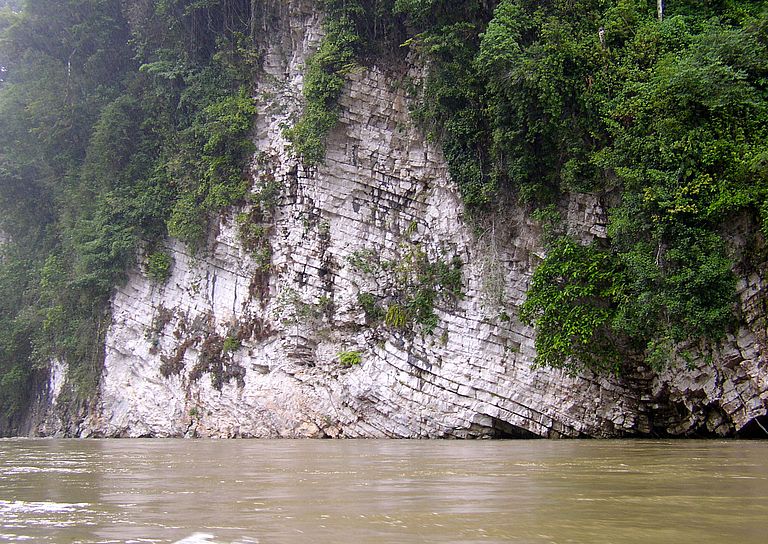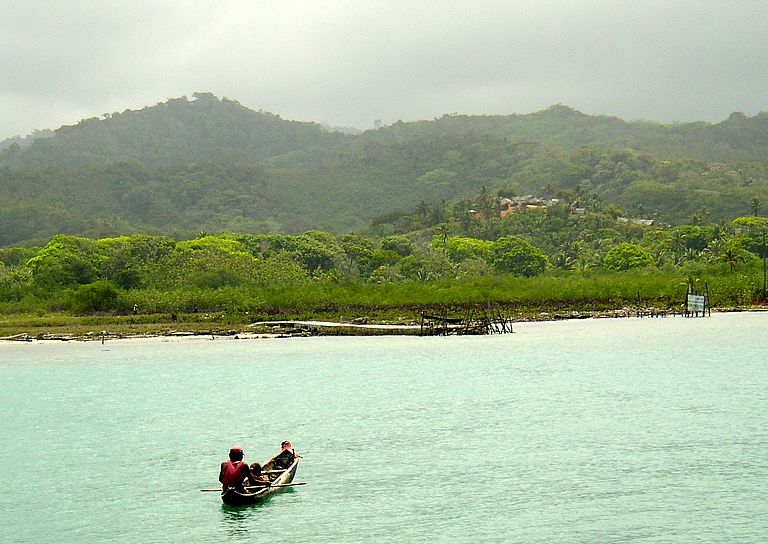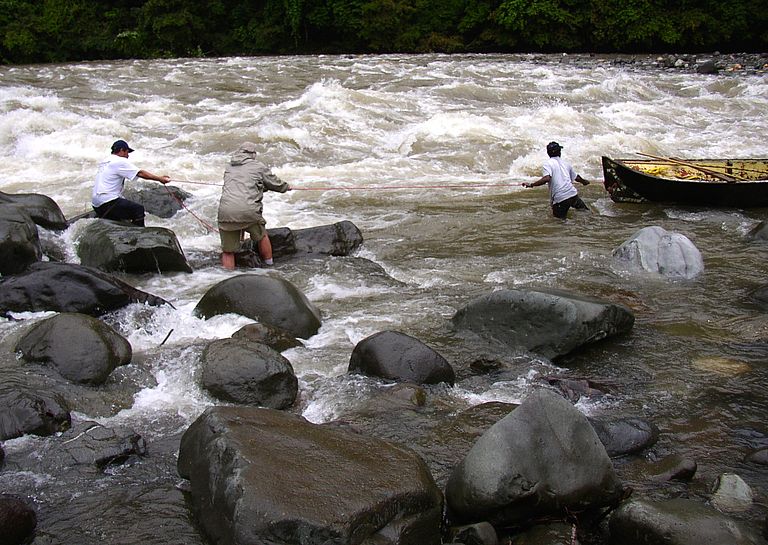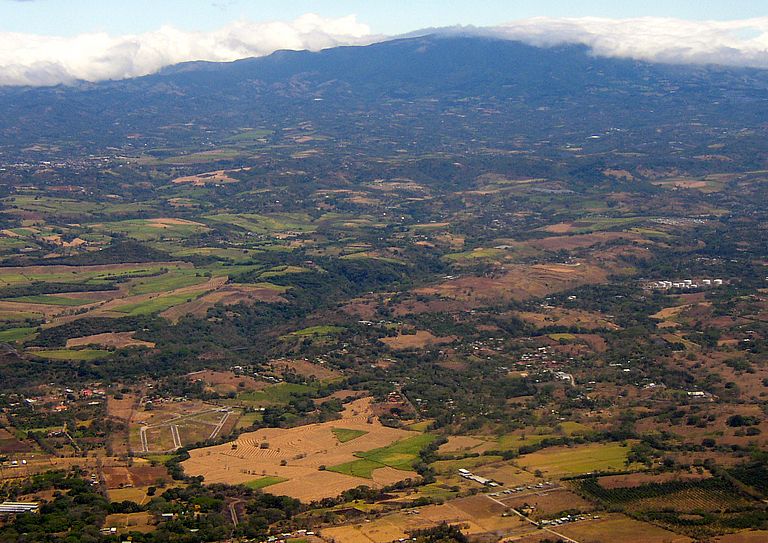How continents grow from the oceans
An international research team including scientists from GEOMAR elucidates how continental crust can be formed in oceanic arcs even at the present
Read more on the website of Virginia Tech University

Lime-stone formation at the Changinola river, Panama. Photo: Kaj Hoernle, GEOMAR

Geological Panama is quite young. Here scientists found evidence for the formation of continental crust. Photo: Kaj Hoernle, GEOMAR

Field work on the central-american land bridge. Often the scientists had to use boats to reach the sampling sites. Photo: Kaj Hoernle, GEOMAR

A witness of subduction processes: the Póas volcano in Costa Rica. PHoto: Kaj Hoernle, GEOMAR


